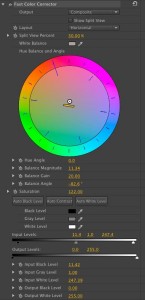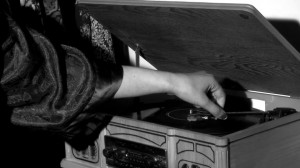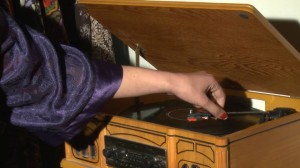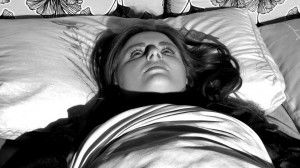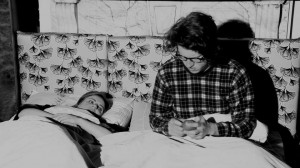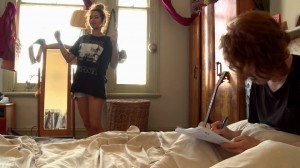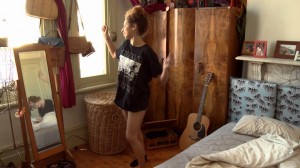When observing the film, ‘The lovely month of May.’ – (Jean Ravel, 1964) I am immediately confronted with a somewhat jarring music soundtrack. The low tuned piano and consistently fast pacing of the drums within the background function to elevate the rapidness and slightly uneasing tune. One way in which I am able to describe the music is to explain it as ‘colourful’ in a way that it balances out the monochromatic filter on the film. I appreciate the manner by which the efferverscent music soundtrack reflects a specific city period represented within the documentary.
Evidently, this is a strongly music driven film. The suddden variations within the music function as episodic dividers of the documentary narrative portrayed. Although the music functions as a directorial mechanism on it’s own, the audience’s attention is specifically focused on a thematic structure through the narration that enters the film 1 minute in. The voice describes a sense of relief, peace and distraction with specific banalities that the parisians can now be occupied with as they are near ending the Algerian War.
I appreciate the fullness of the frames in that there’s a consistency with that sense of intensity established by the rapid paced music. This is nicely juxtaposed to the serene, gentle voice of the narrrator which in my opinion, function to make the voice central and clear for the audience to focus on. The soundtrack and consequently, narrative, progressively changes as the music adopts a slower paced character involving a guitar sound that emphasises a sense of serenity matched by close ups on specific people living within the city; becoming more personalised . Once again the narrative shifts as the music returns to a fast paced, heavier and more off-tone soundtrack. This shift is again matched by a faster pace in editing between the faces within the city. The audience is taken on an interesting and eclectic journey through the different city areas. The camera seems to constantly pan so as to direct the viewer’s eye-sight to a specific element on screen whether it be the wide range of classy hats worn by the parisians (which itself has adopted a them throughout the film so as so emphasise the parisian style at such point in time). The constant close ups shown of the policemen seem to contextualise the period, which is that of the end of the Algerian war.
The camera work is interesting here in that it takes on both a ‘fly on the wall’ characterstic and an interesting omnipotent character role on it’s own. It serves as the all-knowing and all-seeing eye to the city life in Paris during the period of 1962 in which it was filmed.
The camera framing seems to conitinously vary from close ups on individuals within the city and cuts to long shots of moving objects or beings wihtin the city to emphasise the business of the period. The constant movmeemnt within the frame similarly abides by the thematic structure established through the music, narration, and editing technique.
